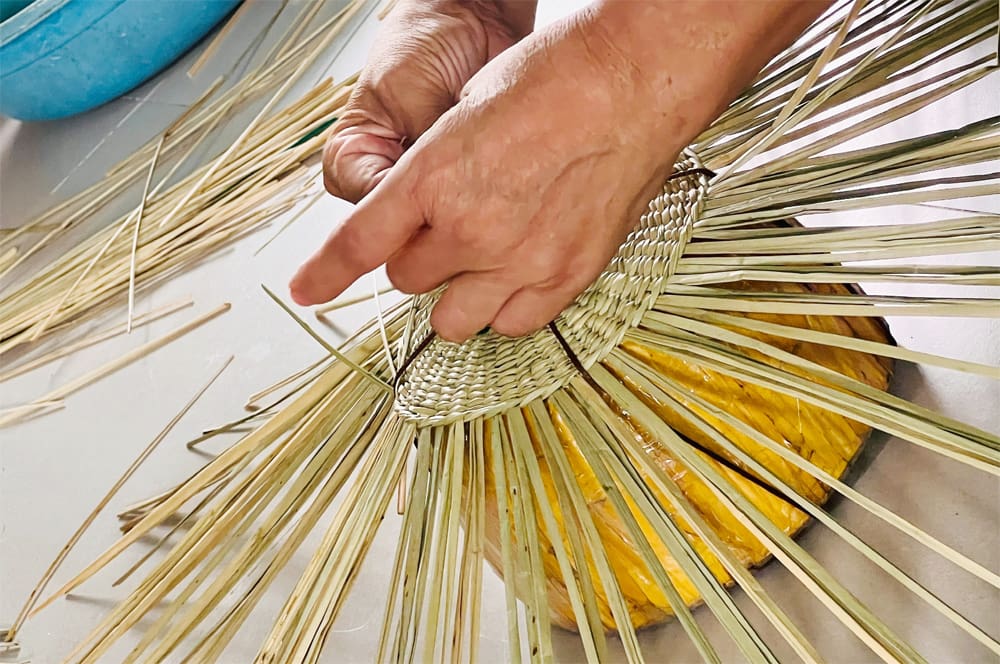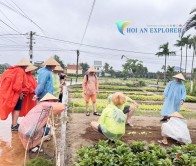Discovering Hoi An’s Timeless Art: The Beauty of Traditional Rattan Weaving
Hoi An, a town where time seems to slow down, is famous for its lantern-lit streets, rich history, and captivating craftsmanship. Among its many traditional arts, rattan weaving stands out as a hidden gem—an age-old skill passed down through generations, weaving not just rattan but also stories, culture, and heritage.
You can discover more of Hoi An’s timeless art and of our traditional crafts as: Hoi An Bamboo Handicraft Workshop, Hoi An Lantern Class
For any further information about Hoi An Explorer, please contact via hotline 0905.223.343 (Ms.Tina)

The Legacy of Rattan Weaving in Hoi An
Long before the days of mass production, artisans in Hoi An mastered the intricate techniques of weaving rattan into everyday household items. From baskets to furniture and delicate lanterns, this craft has been an integral part of the town’s identity. Families have dedicated their lives to refining this skill, ensuring that each product carries not only utility but also a piece of their legacy.
Even today, you can find local artisans weaving in small workshops tucked away in quiet alleyways or vibrant craft villages just outside the ancient town. Here, the rhythmic motion of skilled hands transforms simple natural materials into beautifully handcrafted masterpieces.
The Art Behind the Craft
Rattan weaving is a delicate and meticulous process that requires patience, precision, and creativity. It all begins with selecting the right type of rattan—a natural, flexible vine native to Vietnam’s tropical forests. After being harvested, the rattan is treated, softened, and split into strands, each varying in thickness depending on the intended design.
Weaving itself is an art form. Some patterns are tightly knit for durability, while others are loosely woven to create intricate, decorative designs. Whether making a traditional basket, a stylish bag, or a unique lamp, each piece is handcrafted with incredible attention to detail.
Why Hoi An’s Rattan Weaving Still Matters
In a world increasingly driven by mass production and synthetic materials, traditional rattan weaving remains a symbol of sustainability. The craft embodies eco-friendliness—rattan is biodegradable, renewable, and harvested without harming the environment. Supporting local artisans means preserving this time-honored skill and embracing a more mindful approach to consumption.
Many workshops welcome travelers to try their hand at weaving, offering a rare opportunity to create a personalized souvenir with the guidance of skilled artisans.
Where to Experience Rattan Weaving in Hoi An
If you want to explore this craft beyond the shopfronts of the ancient town, several villages near Hoi An specialize in rattan weaving. Cam Thanh and Kim Bong villages are among the best places to witness artisans at work.
You can find Rattan products, such rattan hat, a rattan mat at Tam Thang village, Tam Ky, Quang Nam (or Ky An Tunnel), where the traditional handmade skills remain.
Alternatively, signing up for a weaving workshop within Hoi An allows you to learn the process firsthand. Guided by experts, you’ll discover the patience and skill required to transform raw rattan into a beautiful handcrafted object—perhaps a basket, a lantern, or even a stylish accessory.
Bringing a Piece of Hoi An Home
Whether you try weaving yourself or simply admire the artistry from a distance, taking home a handcrafted rattan piece is more than just buying a souvenir—it’s carrying a piece of Vietnam’s cultural heritage. Each woven item tells a story, reflecting generations of craftsmanship and tradition.
So, next time you wander through the enchanting streets of Hoi An, take a moment to appreciate the art of rattan weaving. It’s more than just a craft; it’s a timeless expression of history, creativity, and sustainability—all woven together in the heart of Vietnam.



